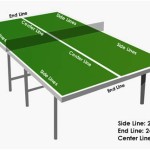Planning Your Perfect Raised Vegetable Garden Layout
Raised vegetable gardens offer a multitude of advantages for both novice and experienced gardeners. They provide improved drainage, better soil control, accessibility for those with mobility issues, and a reduction in weeds and pests. However, maximizing the yield and aesthetic appeal of a raised garden hinges on careful planning – specifically, the layout. A well-designed layout considers factors such as sunlight exposure, plant compatibility, and efficient space utilization, leading to a more productive and enjoyable gardening experience.
The initial step in designing a raised garden layout involves assessing the site. This assessment includes evaluating the amount of sunlight the area receives throughout the day, the direction of prevailing winds, and the proximity to water sources. Understanding these environmental factors is crucial for selecting appropriate plant varieties and positioning them strategically within the raised beds.
Once the site is assessed, the next step is to determine the dimensions and number of raised beds. Standard dimensions for raised beds are typically 4 feet wide and 8 feet long, allowing easy access to the plants from either side without stepping into the bed. The height of the bed should be at least 12 inches to provide sufficient drainage and root depth. The number of beds depends on the available space and the gardener's ambitions. Beginners may wish to start with a smaller number of beds to gain experience before expanding their garden.
Sunlight Considerations for Plant Placement
Sunlight is a critical factor in plant growth and development. Most vegetables require at least six hours of direct sunlight per day to thrive. Therefore, the orientation of the raised beds should be optimized to maximize sunlight exposure. In the Northern Hemisphere, an east-west orientation is generally preferred, as it allows plants to receive sunlight throughout the day. In the Southern Hemisphere, a north-south orientation is often favored.
Within the raised bed, taller plants should be placed on the north side to avoid shading smaller plants. This strategic placement ensures that all plants receive adequate sunlight. For example, tomatoes, peppers, and corn can be positioned along the north edge, while leafy greens, herbs, and root vegetables can be placed on the south side. Paying attention to the mature height of each plant will prevent unintended shading conflicts.
The angle of the sun changes throughout the year, so consider how shadows might shift as the season progresses. What works well in the spring might not be ideal in the summer. Observation and adjustment may be required as the garden matures.
Companion Planting Strategies
Companion planting involves growing different plant species together to benefit each other. Some plants can deter pests, improve soil health, or provide support for neighboring plants. Implementing companion planting techniques in the raised garden layout can enhance plant growth and reduce the need for chemical interventions.
For instance, basil is a common companion plant for tomatoes, as it repels pests such as tomato hornworms and whiteflies. Marigolds are also effective at deterring nematodes and other soil-borne pests. Planting these companion plants alongside vulnerable vegetables can significantly improve their health and yield. Another example is planting carrots and onions together; the onion scent deters carrot root fly, while the carrot scent deters onion fly.
Conversely, some plants should not be planted near each other. For example, members of the cabbage family (broccoli, cabbage, cauliflower) should not be planted near strawberries, as they can stunt each other's growth. Similarly, fennel should be kept away from most other vegetables, as it inhibits their growth. Understanding these plant interactions is essential for creating a thriving and balanced garden ecosystem. Referencing a companion planting chart is a useful tool for planning a successful layout.
Intercropping, or planting quick-growing crops between slower-growing ones, is another efficient use of space. For example, radishes can be planted between rows of carrots, as they mature quickly and are harvested before the carrots need the space. This technique maximizes the yield from a single raised bed.
Efficient Space Utilization Techniques
Raised beds offer a confined space, making efficient utilization crucial for maximizing productivity. Several techniques can be employed to optimize space and increase the yield per square foot.
Vertical gardening is an excellent way to make the most of limited space. Trellises, stakes, and cages can be used to support climbing plants like tomatoes, cucumbers, and beans. This not only saves ground space but also improves air circulation and reduces the risk of fungal diseases. Ensure the support structures are sturdy enough to handle the mature weight of the plants.
Succession planting involves planting crops in succession throughout the growing season. For example, after harvesting early spring crops like spinach and lettuce, they can be replaced with summer crops like tomatoes, peppers, or eggplant. This ensures a continuous harvest and prevents the raised beds from remaining empty during the growing season. Plan planting schedules carefully to ensure that plants have enough time to mature before the first frost. Consider using a planting calendar to track sowing and harvesting times.
Square foot gardening is a technique that divides the raised bed into a grid of one-foot squares, with each square dedicated to a specific number of plants. This method allows for precise spacing and maximizes the yield from a small area. The number of plants per square depends on the size of the plant; larger plants like tomatoes require one square, while smaller plants like radishes can be planted 16 per square. This method simplifies planning and planting, making it ideal for beginners.
Proper spacing between plants is essential for optimal growth. Overcrowding can lead to stunted growth, reduced yields, and increased susceptibility to diseases. Refer to seed packets or plant labels for recommended spacing guidelines. Thinning seedlings after germination is also important to ensure that each plant has enough room to thrive.
Consider the mature size of the plants when planning the layout. A small seedling may not give a true indication of the space it will eventually require. Leaving adequate spacing from the outset will prevent the need for transplanting later, which can disrupt the plants' root systems.
Pathways between raised beds also contribute to efficient space utilization. Narrow pathways are suitable for wheelbarrows and foot traffic, while wider pathways allow for easier maneuverability and access to all areas of the garden. Mulching the pathways with wood chips, straw, or gravel can help to suppress weeds and maintain a clean and tidy garden.
Finally, regular observation and maintenance are key to maximizing the productivity of the raised garden. Removing weeds, pruning plants, and providing adequate water and fertilizer will help to ensure that plants are healthy and thriving. A well-maintained garden is a productive garden, which yield more harvests.
By carefully considering these factors and implementing these techniques, gardeners can create a raised vegetable garden layout that is both aesthetically pleasing and highly productive. The reward for careful planning is a bountiful harvest and a thriving garden ecosystem.

How To Plan For A Raised Garden Bed Brepurposed

Planning Your Vegetable Garden Mapping The Beds

4x8 Raised Bed Vegetable Garden Layout Ideas What To Sow Grow

4x8 Raised Bed Vegetable Garden Layout Ideas What To Sow Grow

Vegetable Garden Layout 7 Best Design Secrets A Piece Of Rainbow

Vegetable Garden Layout Planning Bonnie Plants

4x8 Raised Bed Vegetable Garden Layout Ideas What To Sow Grow Small Gardens

Raised Bed Garden Design How To Layout Build

Raised Bed Garden Design Tips Growing In The

4x8 Raised Bed Vegetable Garden Layout Ideas What To Sow Grow
Related Posts








